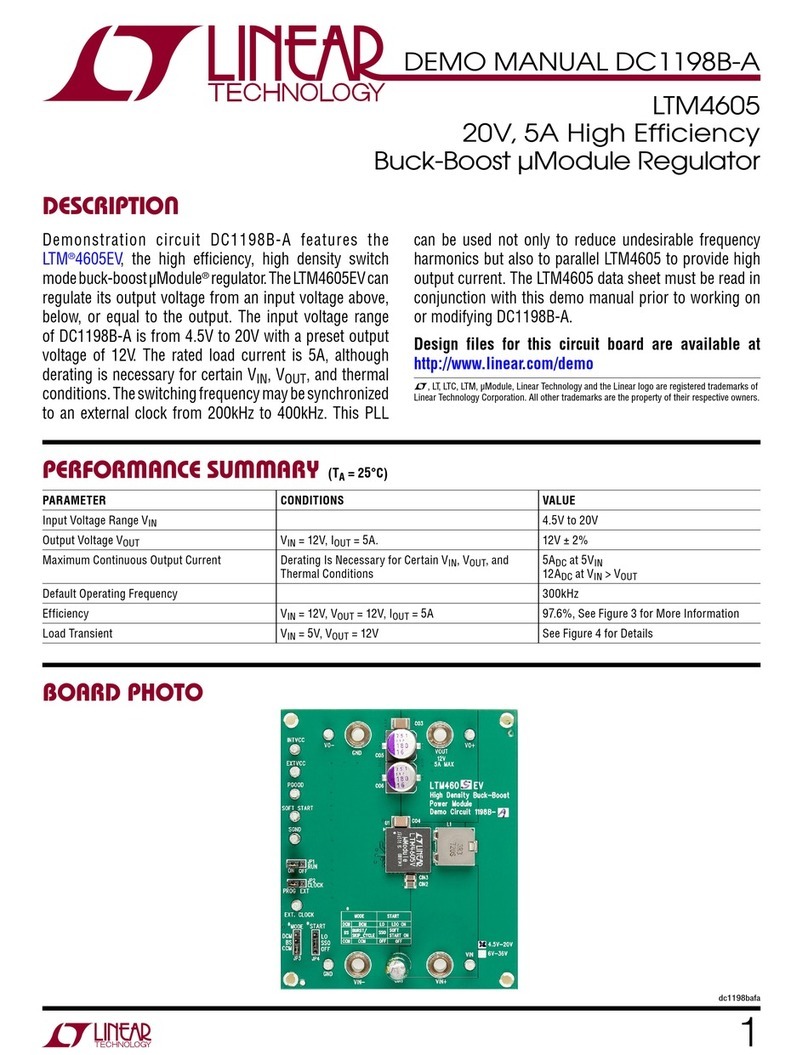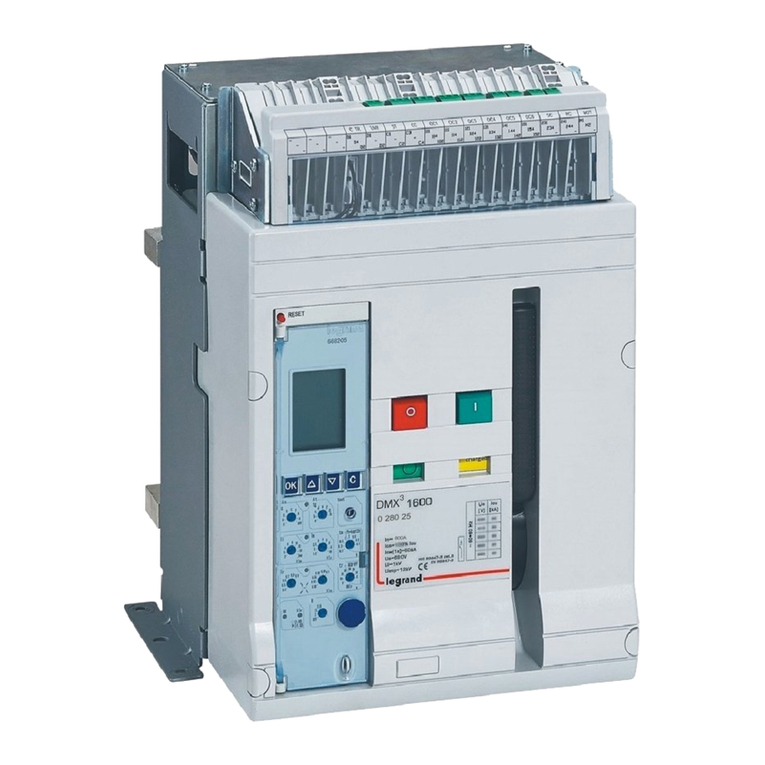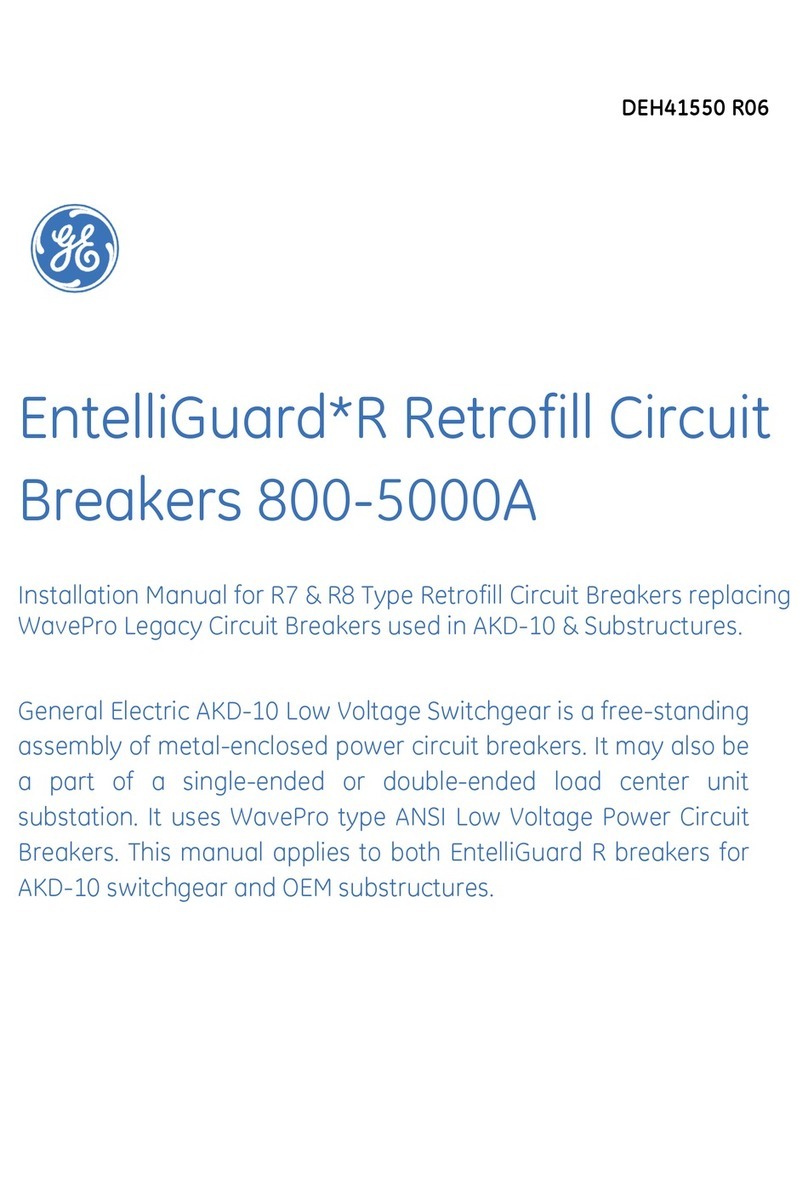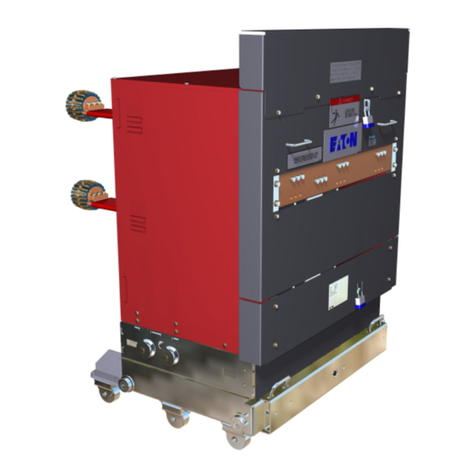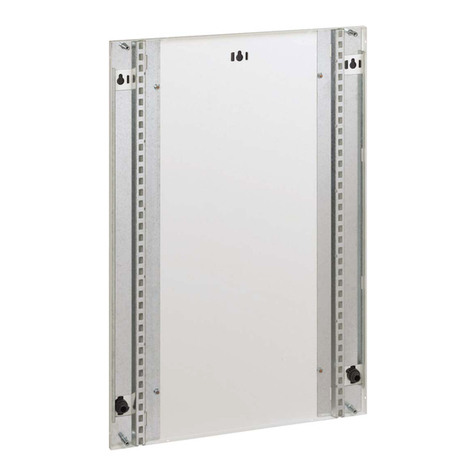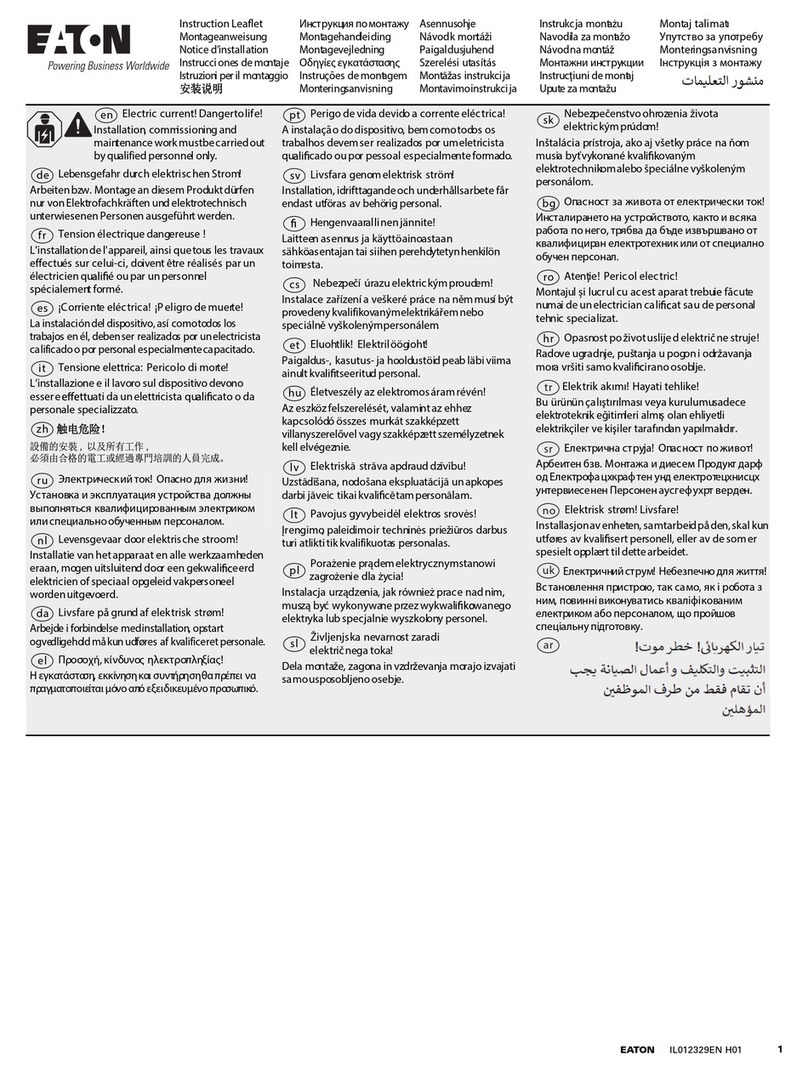Linear Technology 1317A-D User manual

QUICK START GUIDE FOR DEMONSTRATION CIRCUIT 1317A-D
ACTIVE RESET ISOLATED 18-72V INPUT TO 24V @5A DC/DC POWER CONVERTER
1
LT1952-1
DESCRIPTION
Demonstration circuit 1317A-D is isolated input to
high current output 1/8th Brick footprint converter
featuring the LT®1952 switching controller with Ac-
tive Reset circuit. The Active Reset circuit can im-
prove the efficiency in wide input voltage applica-
tions. Also, the Active Reset allows the implementa-
tion of self-driven synchronous secondary rectifiers
in some applications.
The DC1317A-D (Figure 7) converts isolated 18V to
72V input to 24V output and provides over 5A of out-
put current depending on cooling. When determining
the cooling requirements the actual input voltage
range and continuous maximum output current must
be taken into account. The converter operates at
220kHz with the peak efficiency greater than 94%.
The DC1317 can be easily modified to generate out-
put voltages in the range from 0.6V to 48V. The out-
put currents are limited by total output power of up to
150W.
The available versions of DC1317A are:
DC1317A-A, 34-75Vin to 3.3V, 35A
DC1317A-B, 18-72Vin to 5V, 25A
DC1317A-C, 18-72Vin to 12V, 8A-12A
DC1317A-D, 18-72Vin to 24V, 5A
DC1317A-E, 36-72Vin to 5V, 12A
DC1317A-F, 9-36Vin to 3.3V, 22A
* DC1317A-F5, 9-36Vin to 5V, 20A
DC1317A-G, 9-36Vin to 12V, 8A
* DC1317A-G18, 9-36Vin to 18V, 5A
DC1317A-H, 9-36Vin to 48V, 1.5A
* The *DC1317A-G18 is a slightly modified design
featuring 18V @6A output. Please contact the LTC
factory for details.
The DC1317 circuit features soft-start which prevents
output voltage overshoot on startup or when recover-
ing from overload condition.
The DC1317 has precise over-current protection cir-
cuit that allows for continuous operation under short
circuit conditions. The low power dissipation under
short circuit conditions insures high reliability even
during short circuits.
The LT1952 can be synchronized to an external clock
of up to 400kHz. Please refer to LT1952 data sheet for
design details and applications information.
Design files for this circuit board are available. Call
the LTC factory.
LT is a trademark of Linear Technology Corporation
Table 1. Performance Summary
PARAMETER CONDITION VALUE
Minimum Input Voltage IOUT = 0A to 5A 18V
Maximum Input Voltage IOUT = 0A to 5A 72V
VOUT VIN = 18V to72V, IOUT = 0A to 5A (7Amax) 24V ±3%
Typical Output Ripple VOUT VIN = 18V to 72V, IOUT = 0A to 5A 100mVP–P
Nominal Switching Frequency 220kHz

QUICK START GUIDE FOR DEMONSTRATION CIRCUIT 1317A-D
ACTIVE RESET ISOLATED 18-72V INPUT TO 24V @5A DC/DC POWER CONVERTER
2
QUICK START PROCEDURE
Demonstration circuit 1317 is easy to set up to evalu-
ate the performance of LT1952-1 circuit. Refer to Fig-
ure 1 for proper measurement equipment setup and
follow the procedure below:
NOTE:
When measuring the input or output voltage
ripple, care must be taken to avoid a long ground lead
on the oscilloscope probe. Measure the input or out-
put voltage ripple by touching the probe tip directly
across the Vin or Vout and GND terminals. See Figure
2. for proper scope probe technique.
1.
With power off, connect the input power supply to
Vin and GND. Make sure that the input power sup-
ply has sufficient current rating at minimum input
voltage for the required output load.
2.
Turn on the power at the input.
NOTE:
Make sure that the input voltage does not
exceed 72V including transients.
3.
Check for the proper output voltage.
Vout = 24V.
If there is no output, temporarily disconnect the
load to make sure that the load is not set too high.
4.
Once the proper output voltage is established, ad-
just the load within the operating range and ob-
serve the output voltage regulation, ripple voltage,
efficiency and other parameters.
5.
The DC1317 is equipped with an output capacitor
CSYS (330uF) that approximates typical system
rail capacitance. If system board already has ca-
pacitance of similar value CSYS can be removed.

QUICK START GUIDE FOR DEMONSTRATION CIRCUIT 1317A-D
ACTIVE RESET ISOLATED 18-72V INPUT TO 24V @5A DC/DC POWER CONVERTER
3
Figure 1. Proper Measurement Equipment Setup
Figure 2. Scope Probe Placement for Measuring Input or Output Ripple
ACTIVE RESET CIRCUIT
The Active Reset circuit on DC1317A-D demo board
consists of a small P-Channel MOSFET Q13 and
reset capacitor C25. The MOSFET Q13 is used to
connect the reset capacitor across the transformer
T1 primary winding during the reset period when
Q1 MOSFET is off. The voltage across capacitor
C25 automatically adjusts with the duty cycle to
provide complete transformer reset under all oper-
ating conditions.
Also the active reset circuit shapes the reset voltage
into a square waveform that results in lower drain
voltages for Q1 and Q2 MOSFETs. The lower
MOSFET drain voltages allow lower voltage and
lower Rdson MOSFETs to be used. The MOSFETs
must be avalanche rated for the peak reset voltage.
If non-avalanche rated MOSFETs are used a proper
drain voltage derating should be used.
The main benefit of active reset circuit in the case of
DC1317A-D demo board is high efficiency (shown
in Figure 3), wide input range, high power density

QUICK START GUIDE FOR DEMONSTRATION CIRCUIT 1317A-D
ACTIVE RESET ISOLATED 18-72V INPUT TO 24V @5A DC/DC POWER CONVERTER
4
and small size. To achieve such high efficiency all of
the power components were carefully selected.
Please consult LT factory for assistance if any
changes to the circuit are required.
DC1317A-D 24V Output Efficiency
85%
87%
89%
91%
93%
95%
0 2 4 6
Iout [A]
Efficiency
48V in
24V in
Figure 3. High efficiency of DC1317A-D allows the
board to be used in thermally critical applications
OUTPUT LOAD STEP RESPONSE
The load step response of DC1317A-D is very fast
even though relatively small amount of output ca-
pacitance is present (22uF ceramic and 330uF elec-
trolytic). This is thanks to fast error amplifier of
LT4430, optimal amount of current slope compen-
sation of LT1952, fast opto coupler and fast error
amplifier of LT1952. If higher load steps need to be
handled more output capacitance can be added in
order to keep the voltage transients at the desired
level. The load step transients are shown in Figure
5.
Figure 5. Fast transient response of DC1317A-D is
superior to many competing power modules with-
out the additional output capacitors.
SOFT START FUNCTION
The DC1317 features LT4430 opto coupler driver
that has soft start function which produces mono-
tonic startup ramp shown if Figure 6. The rise time
of output voltage is controlled by capacitor C19 that
is connected to OC (Overshoot Control) pin of
LT4430. Also, the soft-start function will prevent
input current surges even with full load at the out-
put.
Figure 6. The LT4430 opto coupler driver pro-
duces monotonic output voltage rise at startup
without output voltage overshoot.
DEBUGGING AND TESTING
The DC1317 can easily be tested and debugged by
powering the bias circuit separately from the main
power circuit. To place DC1317 into debug mode

QUICK START GUIDE FOR DEMONSTRATION CIRCUIT 1317A-D
ACTIVE RESET ISOLATED 18-72V INPUT TO 24V @5A DC/DC POWER CONVERTER
5
remove the resistor R1 and connect 12V, 100mA
power source to +Vb node (right side of R1). By
doing this, the primary PWM controller LT1952 can
be activated without the main primary power being
applied to +Vin.
To activate the secondary side control circuit
LT4430 diode OR a 5V, 100mA power source into
pin 1 of LT4430 controller.
Once the primary and secondary controllers are
running the main power (+Vin) can be applied
slowly while observing the switching waveforms
and output voltage.
The input current supplying the power transformer
T1 should not exceeded 200mA without the output
load. If one of the MOSFETs is damaged, the input
current will exceed 200mA.
PCB LAYOUT
The PCB layout should be carefully planned to avoid
potential noise problems. The PCB layout for DC1317A
can be used as a guide. Since demo board DC1317A
has 8 versions the PCB layout has optional compo-
nents that can be removed. The schematic in figure 7
is showing the circuit without any optional compo-
nents. Also, the circuit in figure 7 does not show any
zero-ohm resistors. Please consult the schematic on
page 7 to determine if any of the options should be
included in your PCB layout.
Also, the PCB layout has a common schematic that is
used just for the layout. The PCB layout schematic is
not included in this quick start guide but it is included
with PCB design files.
Please note that the actual circuit schematic on page 7
shows the component values. The PCB layout sche-
matic included with design files does not show the
component values.
In some cases, a different component like a diode is
used in a place holder for a capacitor such as in the
case of C6. Please modify the reference designators in
your schematic to reflect the actual component used.
The following simple PCB layout rules should be help-
ful.
If possible use solid ground planes on layers 2 and
n-1. The ground planes will prevent the switching
noise from coupling into sensitive lines.
Place sensitive lines on the inner layers that will be
shielded by grounds on layers 2 and n-1.
Keep the loop formed by Q1, RCS1, Cin and T1 tight.
Keep the loop formed by Q2, Q3 and T1 tight.
Keep noise sensitive nodes like SD/VSEC, ROSC, FB,
COMP, ISENSE, BLANK and DELAY as small as posible
by placing the associated components close to the
LT1952 and LT4430 chips.
Use local vias for all components that connect to
ground planes.
Do not place any traces on the layers 2 and n-1 to
avoid ground planes from being compromised.
If the PCB layout has to be done on 2 or 4-layer PCB
try to stay close to the guidelines outlined above. Also,
maximize the ground connections between compo-
nents by placing the components tight together.
Please contact LT factory for additional assistance.

QUICK START GUIDE FOR DEMONSTRATION CIRCUIT 1317A-D
ACTIVE RESET ISOLATED 18-72V INPUT TO 24V @5A DC/DC POWER CONVERTER
6
Rcs1
0.006R
+Vin
R54
4.7R
Cu1
4.7u
R23 1.5k
R24
47k
Vu1
R15 169k
R20
75k
C10
0.1u
Vu1
Q1
D10*
100p
C15
2.2nF, 2kV
R28
309k
R22
13.3k
HAT2173
G45R2-0408.004
GND
8
SD
7
MaxDC
5
FB=1.23V
2
Comp
1
Rosc
3
Vr=2.5V
6
Blank 9
Delay 12
OC 11
Sync
4
Isense 10
PGND 13
Out 14
Vin 15
Sout 16
U1
LT1952-1
C13
.47u
R26
220R
R30
1.2k
R14
33K
C23
1uF
Vfb
Vfb
R13
22K
Co1
22uF, X7R
+Vo1
R27
470R
R38
6.04k
R35
237k
R34
13.7k
C19
1uF
C17
15n
+Vo1
SS
3
Vcc
1
FB 4
Opto 6
GND
2Comp 5
U4
LT4430
Cin
3x2.2uF
+Vin
D5
PDZ10B
Vu1
D2
BAS516
R11
82k
-Vin
+Vin
18V to 72V
R1
2.2R
R32
187k
L1
HR-PQA2050-27
Q2
HAT2173
Q3
RJK2055
FG CG
Q12
BC856T
D3
Q10
PBSS8110
+Vb
+Vb
L2
1.5mH
U6
PS2801-1
T1
D11
BAS516
GND
+Vout
* Please change the ref designator to reflect the symbol.
+
Csys
270u, HVH
C9
100p
C25
33n
Q13
Si2325
D14
BAS516
R45
10k
+Vr2
+Vr2
D17
BAS516
2, 3
4, 5
7, 8
10, 11
C33
0.1u
R29*
PMEG3002
C34
0.22u
R53
200R
R2
560k
C8
100p
1
6
Figure 7. Demo board DC1317A-D schematic
NOTE:
This schematic shows only the components required for operation of -D version
of DC1317A demo board.
All optional components of DC1317A demo board have been removed.
Also, all zero-ohm resistors have been replaced with wires.
Please consult the full DC1317A-D schematic to decide if any of the optional
components should be included in your design.
R17
560R
T2A
PE-68386
C14
10u
C12
470p
R19 56k
CS-
2
CS+
1
CG
3
Vcc
4FG 5
GND 6
Timer 7
Sync 8
U5
LTC3900
R21
10k
R18
10k
R16
221K
C5
0.22u
Q9
BCX55
R10
4.7k
D9
PDZ10B
R8 2.2R
FG
CG
C7
220p
Out
C6*
BAS521
D7*
330p
L3*
BAS521
L4
10uH
R3
287
C3
1u
R5
10R
Inp
3
Vcc
1
TS 4
Boost 6
GND
2TG 5
U2
LTC4440-5
C21
470p
D1
BAS516
Vu1
R9
47R
C11
3.3n
D6
B0540
+Vo1
24V @5A
Out

QUICK START GUIDE FOR DEMONSTRATION CIRCUIT 1317A-D
ACTIVE RESET ISOLATED 18-72V INPUT TO 24V @5A DC/DC POWER CONVERTER
7

QUICK START GUIDE FOR DEMONSTRATION CIRCUIT 1317A-D
ACTIVE RESET ISOLATED 18-72V INPUT TO 24V @5A DC/DC POWER CONVERTER
8
This manual suits for next models
7
Table of contents
Other Linear Technology Circuit Breaker manuals
Popular Circuit Breaker manuals by other brands
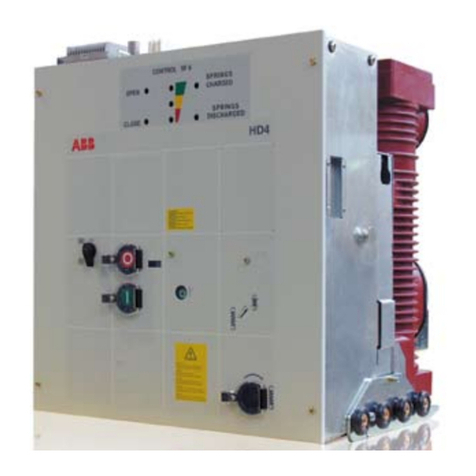
ABB
ABB HD4-HPA Series Installation and service instructions
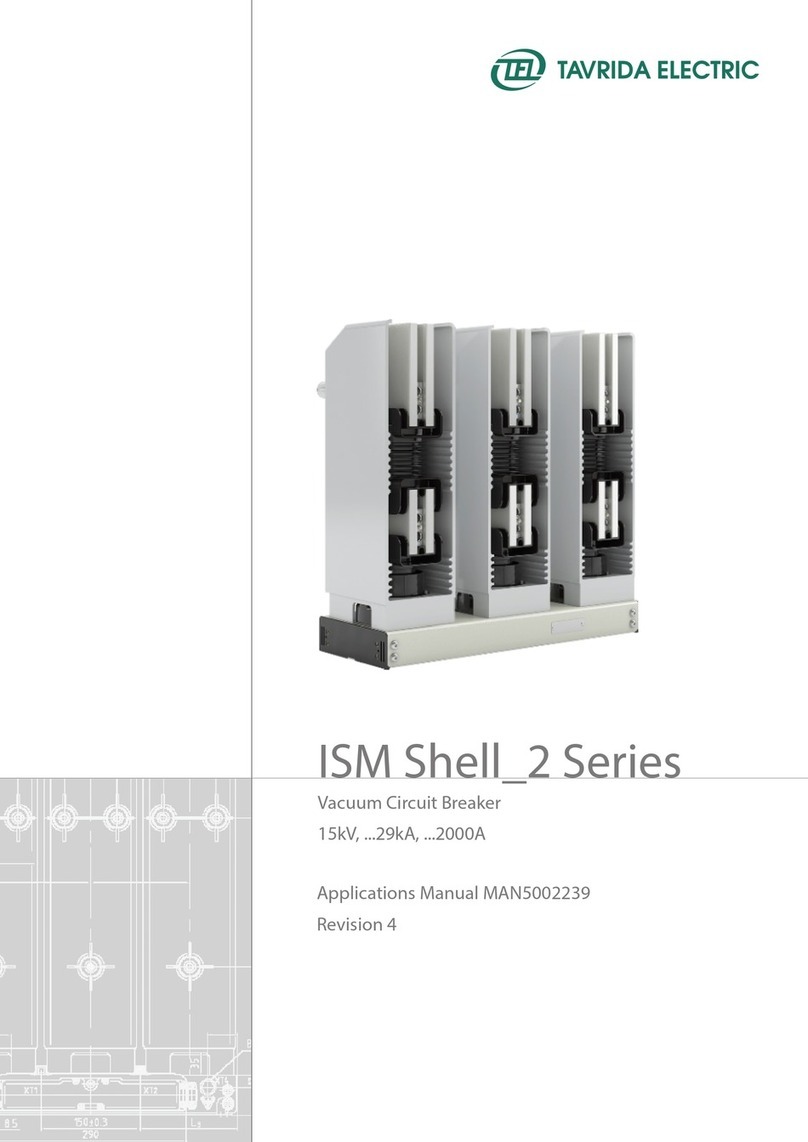
TAVRIDA ELECTRIC
TAVRIDA ELECTRIC ISM Shell_2 Series Applications manual

Eaton
Eaton IZM6 Series instruction manual
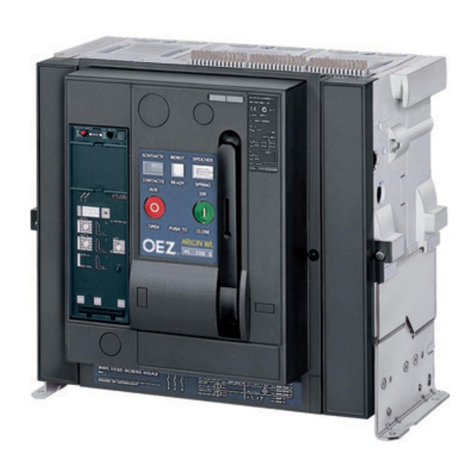
OEZ
OEZ ARION WL Instructions for use

Delixi
Delixi NAVIGATOR Series user manual
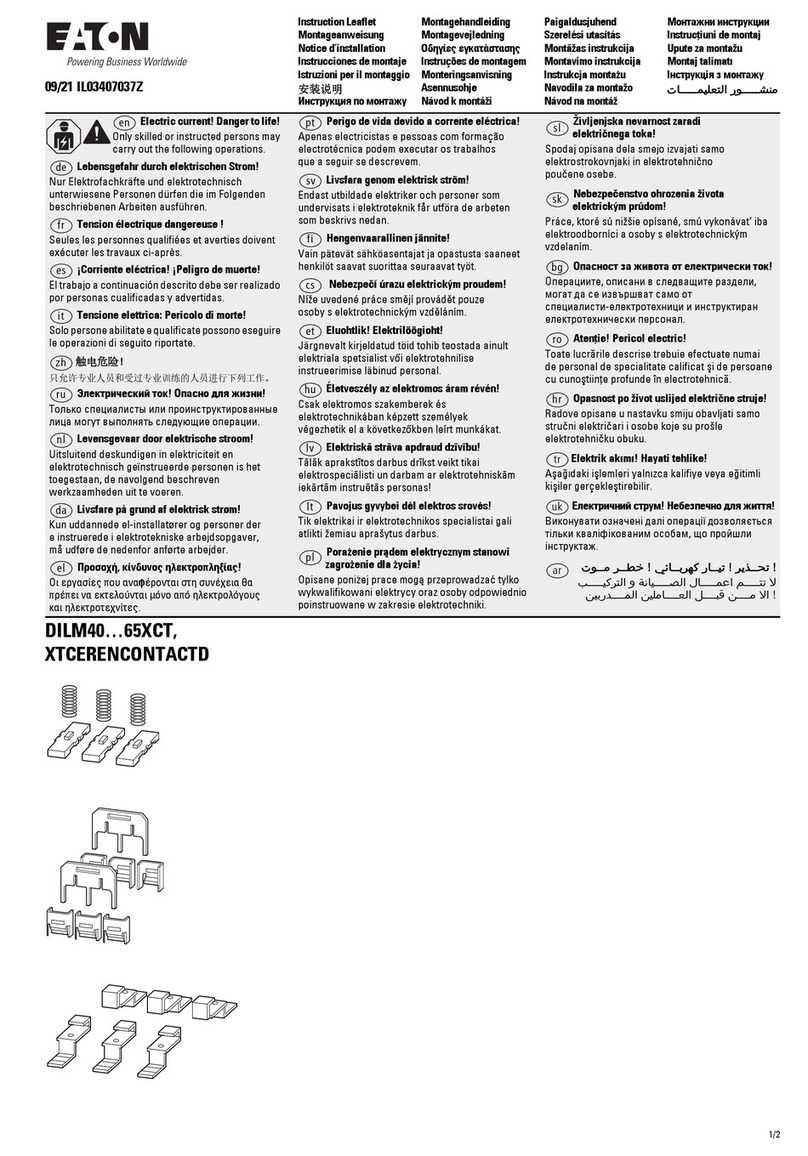
Eaton
Eaton XTCERENCONTACTD DILM40 65XCT Series Instruction leaflet
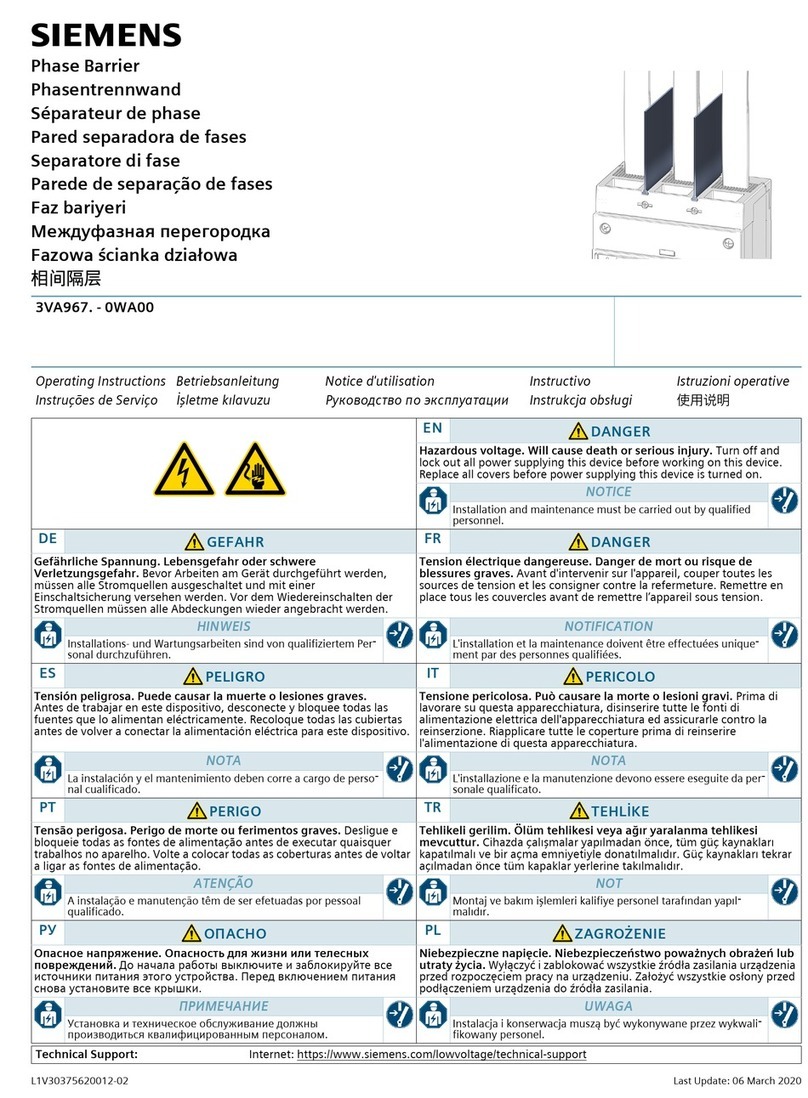
Siemens
Siemens 3VA967 0WA00 Series operating instructions
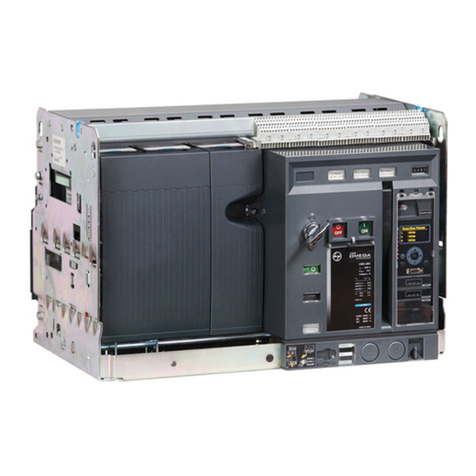
L&T Electrical & Automation
L&T Electrical & Automation OMEGA manual
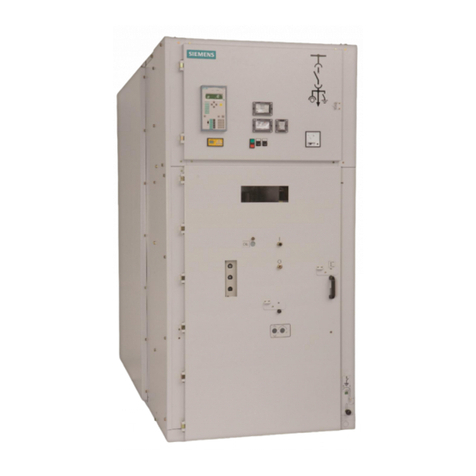
Siemens
Siemens 8BT2 Installation and operating instructions
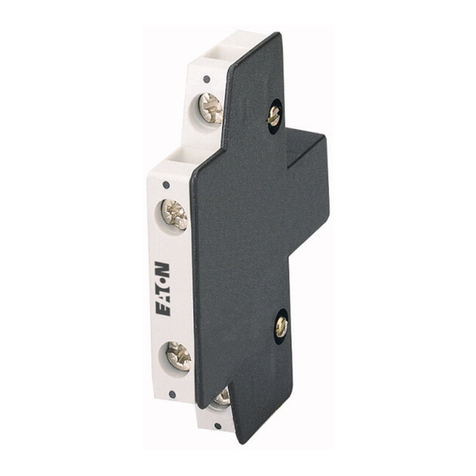
Eaton
Eaton DILM820-XHI11 Series Instruction leaflet
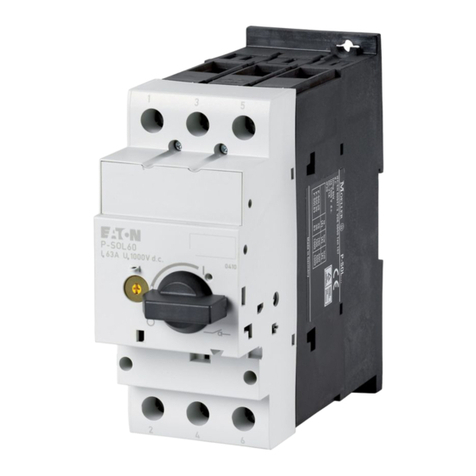
Eaton
Eaton P-SOL60 Instruction leaflet
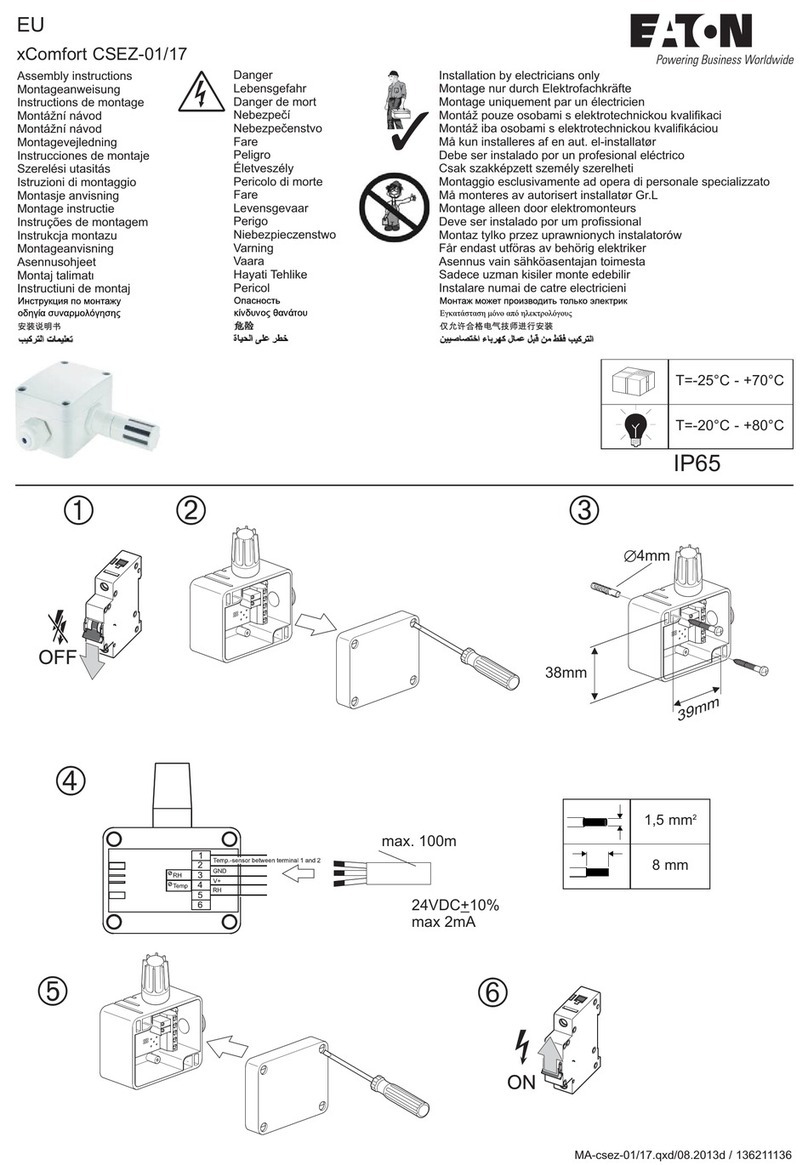
Eaton
Eaton xComfort CSEZ-01/17 Assembly instructions

